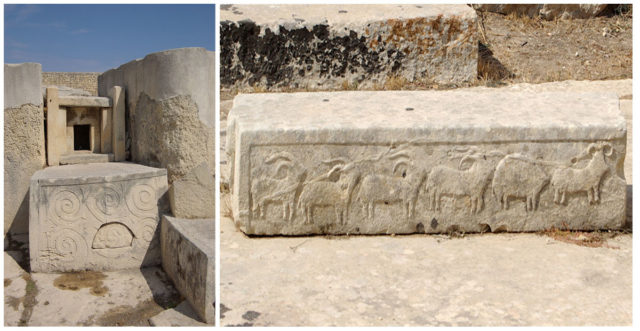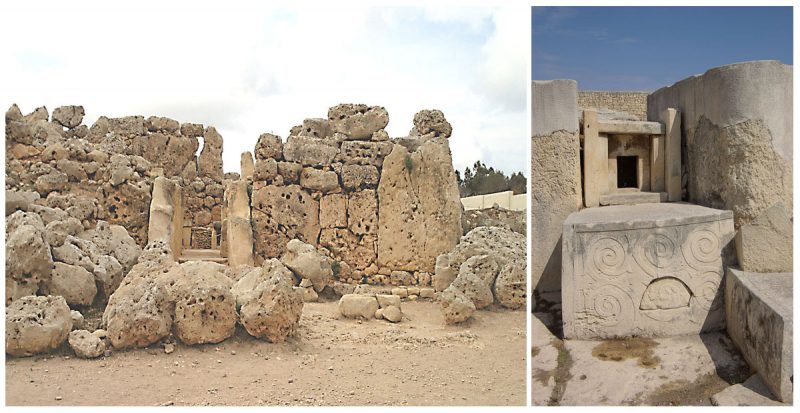The prehistoric monumental temples of Malta that date from 5,500 to 2,500 BC are the oldest buildings in Europe, even older than the Pyramids of Egypt and Stonehenge. Remarkable for their diversity of form and decoration, they rank among the earliest free-standing buildings in the world and they are the result of local innovations in a process of a cultural evolution. The dating of this prehistoric site was done using radio carbon testing of pottery and bones found around those temples in Malta.
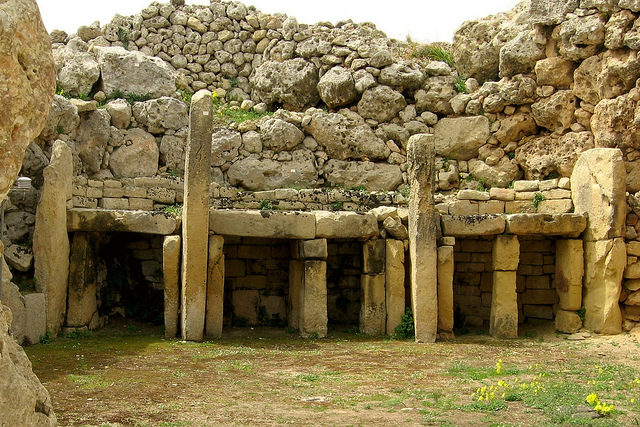
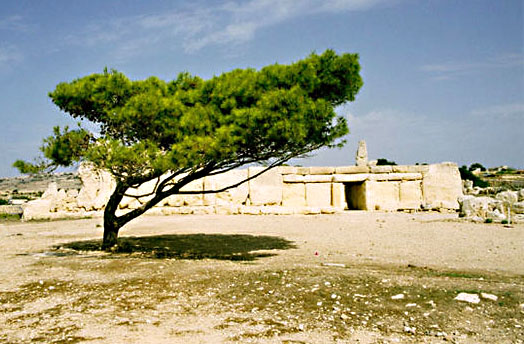
The development of the temples has been split up into three phases spanning the bronze age through the use of radiocarbon dating. The most known are the temples of Ġgantija on the island of Gozo, Hagar Qim, Mnajdra, and Tarxien.
Ġgantija
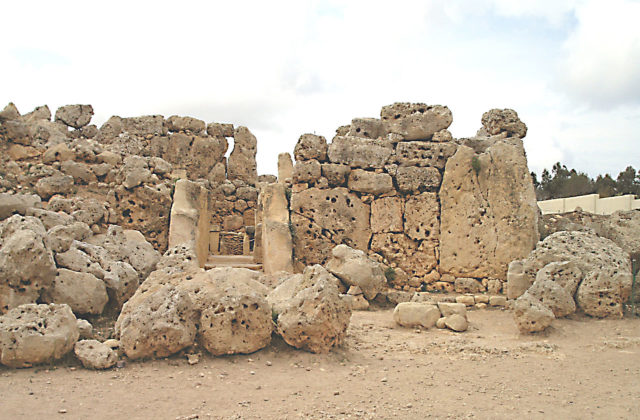
The Ġgantija temples are one of the most important archaeological sites from the Neolithic on the Mediterranean island of Gozo. The site consists of two temples dating back to between 3600 and 3200 BC, which makes this temples more than 5500 years old and the world second oldest manmade structure after Gobekli Tepe. The temples were dedicated to the Great Earth Mother, a goddess of fertility, and also seems to have been a place to pray for healing. According to local Gozitan folklore, a giantess with a child hanging from her shoulders built these temples and used them as places of worship.
Hagar Qim
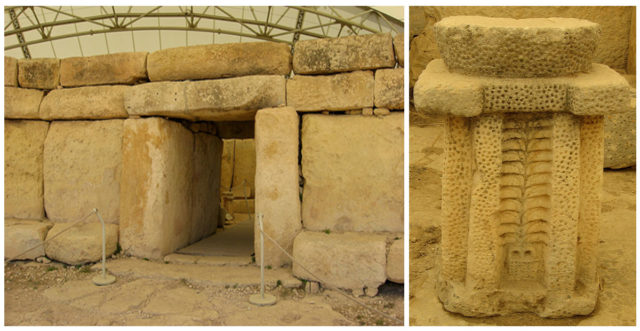
Hagar Qim is a megalithic temple complex dating from the Ggantija phase and is one of the most impressive temples of Malta. Located on the southern edge of the island of Malta, it stands on a hilltop overlooking the sea and the islet of Fifla. Within the temple are two alters, supported by ‘mushroom’ shaped stones and it has been suggested that these indicate the use of hallucinogens. The Hagar Qim façade contains the largest stone used in Maltese megalithic architecture which can be found on the Northern wall of this temple, over 7m long and weighing 57 tons.
Mnajdra
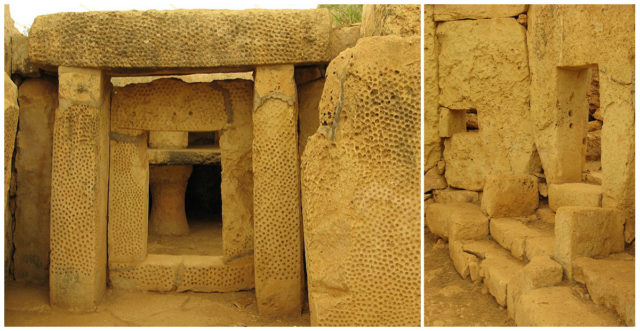
Mnajdra is a megalithic temple complex found on the southern coast of the Mediterranean island of Malta in a little valley below the hill on which the temple of Hagar Qim stands. It is a simple three-apsed structure facing a common oval forecourt dating from c. 3600-3200 BC, not longer after Ggantija was built. The temple is made of coralline limestone, the main structural systems used in the temples are corbelling with smaller stones and large slabs of limestone. Thanks to its good state of preservation, Mnajdra is the most atmospheric of Malta’s many ancient temples.
Tarxien
